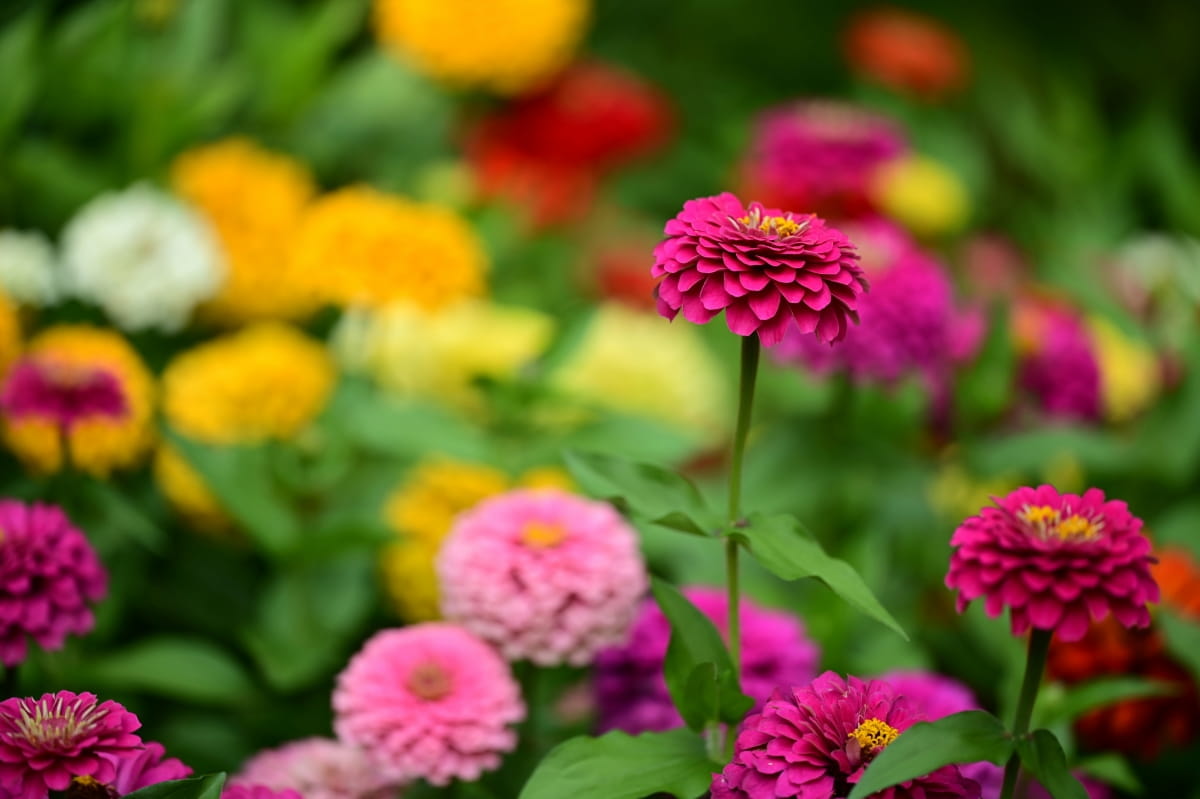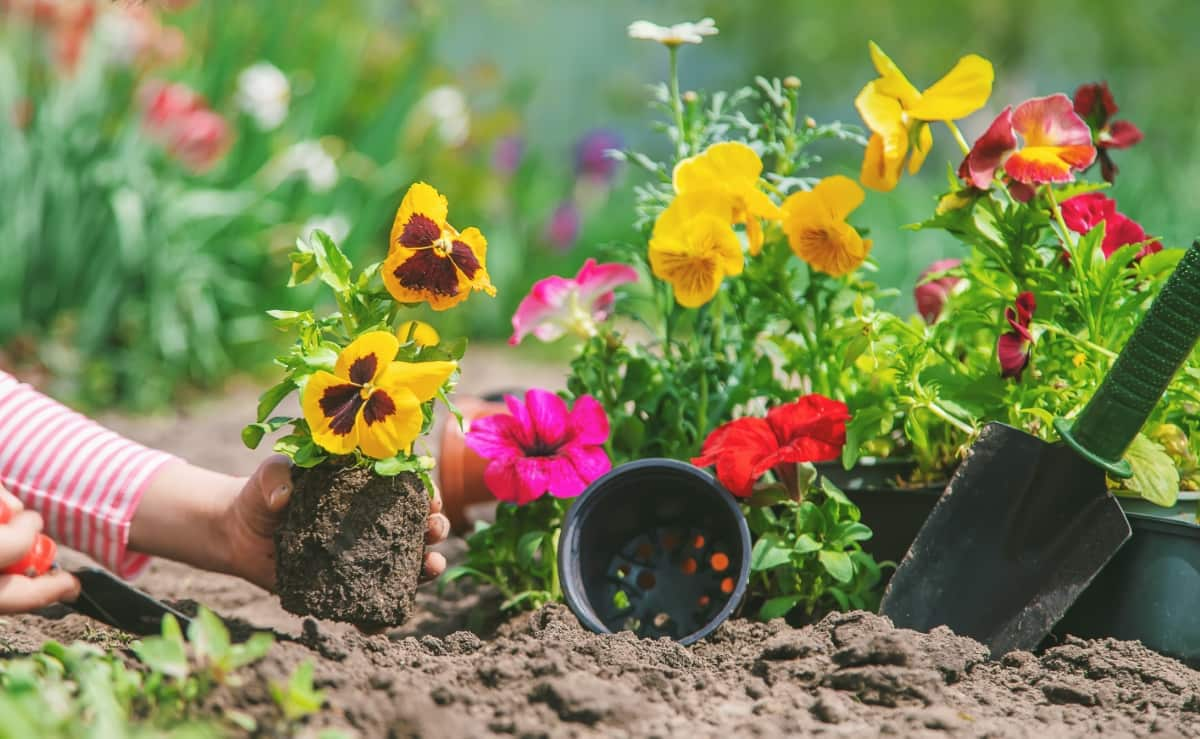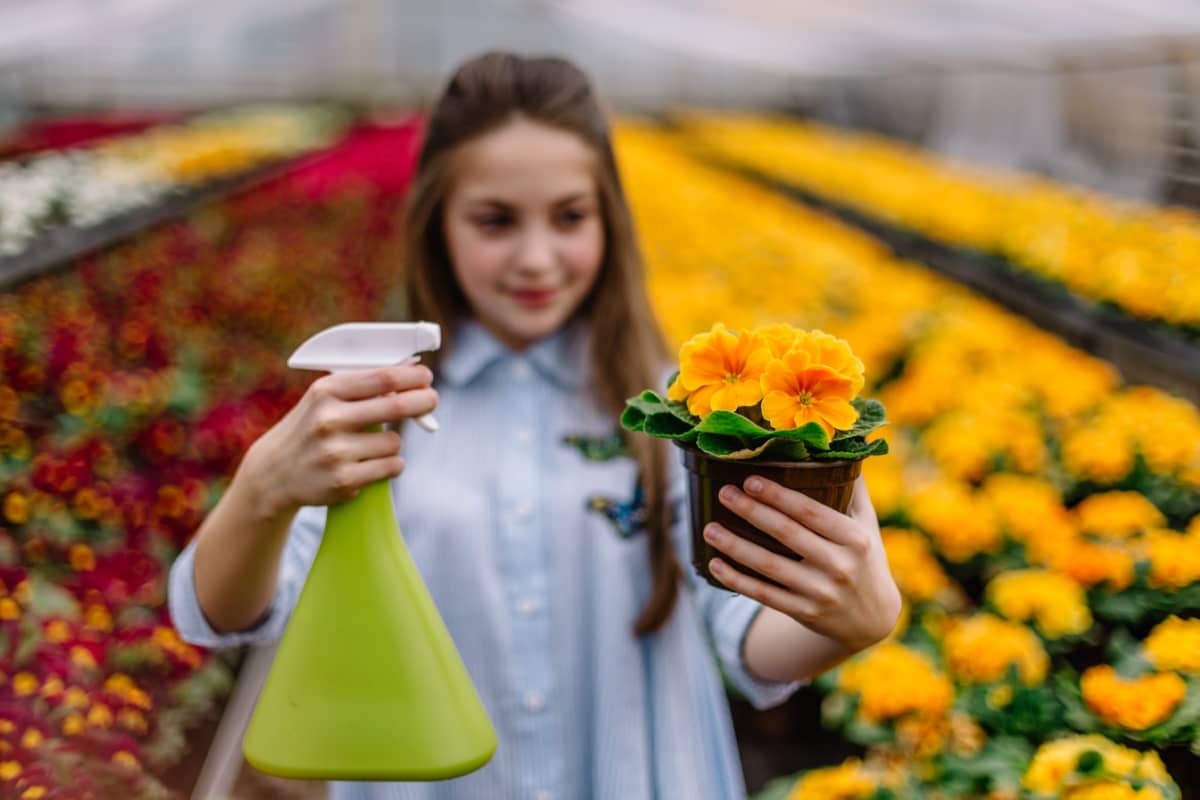Natural fertilizers for flowers offer a sustainable and organic way to nourish and promoting healthy growth and vibrant blooms. Making your own fertilizer at home is not only rewarding but also helps create an eco-friendlier garden that thrives in harmony with nature.

Benefits of Using Natural Fertilizers for Flowers
Natural fertilizers offer Homemade Nutrients for Blooming Flowers without harsh chemicals. By using natural ingredients, you can enhance the health of your plants while reducing environmental impact.
Understanding Your Flower’s Nutritional Needs
Chemical-free flower fertilizers provide essential nutrients in a gentle and balanced manner, supporting overall plant health. Each type of flower has specific requirements for nutrients like nitrogen, phosphorus, and potassium. Natural fertilizers cater to these individual needs by providing organic sources of these vital elements.
Natural Fertilizer Recipes for Flowers
Banana Peel Tea
Ingredients and Preparation
Banana peel tea is like a magical elixir for your flowering plants, packed with nutrients to make them thrive. To whip up this natural fertilizer, start by collecting banana peels – the more organic, the better. Chop them into small pieces and toss them into a container filled with water. Leave it to steep for a few days until you notice the water turning slightly brownish.
Application Method for Flowering Plants
Once ready, strain out the banana peels and dilute the concoction with fresh water before applying it to your beloved blooms. This Nutrient-Rich Soil Amendments for Flowers will provide your flowering plants with essential potassium and other minerals that promote healthy growth and vibrant blossoms. Simply pour this homemade banana peel tea at the base of your flowering plants or use it as a foliar spray for an extra boost.
Eggshell Fertilizer
Rich Source of Calcium
Eggshell fertilizer is an Organic Bloom Boosters to provide calcium to your flowering plants naturally. Rich in nutrients, eggshells can help strengthen cell walls and improve overall plant health. Incorporating eggshell fertilizer into your gardening routine is an eco-friendly and cost-effective way to promote blooming and strong growth in your beloved flowers.
How to Make and Use Eggshell Fertilizer
To make eggshell fertilizer, start by collecting clean and dry eggshells. Crush them into small pieces. Sprinkle the crushed shells around the plants or mix them into the soil before planting. The calcium from the eggshells slowly releases into the soil as they break down, providing a steady nutrient supply for your flowers. This gradual release helps prevent nutrient overload and ensures optimal absorption by your plants.
In case you missed it: From Seedling to Bloom: Tailoring DIY Flower Plants Fertilizers to Different Growth Phases

Coffee Grounds as Fertilizer
Benefits for Acid-Loving Flowers
Coffee grounds are a fantastic natural fertilizer that can help plants like Azaleas, Hydrangeas, and Rhododendrons to thrive. Not only do coffee grounds enrich the soil with essential minerals like potassium and phosphorus, but they also improve drainage and attract earthworms—a gardener’s best friend.
Preparing and Applying Coffee Grounds
After brewing your coffee, allow the ground to dry out. Once they’re cool and dry, sprinkle them around the base of your acid-loving plants. The grounds will slowly release nitrogen into the soil as they decompose, providing a nutrient boost for healthy growth.
Composting for Flowers
Basics of Composting
Composting for flowers is like giving them a gourmet meal, packed with all the nutrients they need to thrive. It’s not just about throwing scraps into a pile; it’s an art form that benefits both your plants and the environment.
How to Create Flower-Friendly Compost
To create flower-friendly compost, start by collecting kitchen scraps like fruit peels, vegetable trimmings, and coffee grounds. Mix in some yard waste like grass clippings and dried leaves for added richness. Layer these ingredients in a bin or designated compost area. Remember to turn the compost to aerate it and speed up decomposition. The magic of composting lies in patience – let nature do its work as the materials break down into black gold for your flowers.
Wood Ash Fertilizer
Potassium for Flowers
Wood ash is a Natural Potassium Source for Flowers, it is an essential nutrient for flowering plants.
Guidelines for Using Wood Ash Safely
To use wood ash safely as fertilizer, make sure it’s from untreated wood without added chemicals. Spread a thin layer around your plants, avoiding direct contact with stems or leaves. Consider incorporating wood ash into your compost pile to enrich the soil over time. Remember not to overdo it – excessive potassium can harm some plants. A little goes a long way in supporting healthy flower development. Before applying wood ash, test your soil pH levels; too much alkalinity can affect plant growth negatively.
Fish Tank Water
Using Aquarium Water for Nutrients
When you change the water in your fish tank, instead of pouring it down the drain, consider using it to give your flowers a boost. The aquarium water is rich in beneficial nutrients like nitrogen and trace minerals that can promote healthy growth in your plants. These nutrients act as natural fertilizers, helping your flowers thrive without the need for chemical additives.
Application Tips for Flower Gardens
To use fish tank water in your garden, simply pour it directly onto the soil around your flowers. Make sure to dilute it with fresh water if it’s too concentrated to avoid over-fertilizing. This way, you’re recycling and providing an Eco-Friendly Flower Nutrition to your beloved blooms. By incorporating fish tank water into your gardening routine, you’re not only reducing waste but also creating a sustainable Flower Feeding of nutrient-rich hydration for your beautiful flower beds.
In case you missed it: 12 Best Water Management Strategies for Flower Gardens

Seaweed Fertilizer
Micronutrients and Growth Hormones
Seaweed fertilizer is a powerhouse of micronutrients and growth hormones that can work wonders for your flowers. This Green Gardening Flower Fertilizers not only supplies essential nutrients but also promotes robust growth and vibrant blooms in your garden.
Preparing Seaweed Extract for Flowers
To prepare Flower Growth Organic Solutions like seaweed extract for your flowers, start by rinsing the seaweed to remove excess salt. Chop or blend the seaweed into small pieces to release its beneficial compounds more effectively. Next, steep the chopped seaweed in water for a few days, allowing it to ferment and create a nutrient-rich solution. The longer you let it sit, the more potent the fertilizer becomes. Once ready, dilute the seaweed extract with water before applying it to your flower beds or potted plants.
Green Tea Brew
A Gentle Nutrient Boost
Green tea isn’t just for sipping – it can also work wonders in your garden. Brewing up a batch of green tea fertilizer is like giving your flowers a gentle nutrient-packed hug. Plus, it’s an Eco-Friendly Flower Fertilizer to nourish your plants without harsh chemicals.
Making and Applying Green Tea Fertilizer
To make this Organic Flower Fertilizer, steep a few bags of green tea in water until it cools. Make sure the tea is at room temperature before using it in your blooms. When applying the green tea brew to your flower bed, pour it directly onto the soil around the base of your plants. This allows the roots to absorb all those beneficial compounds and thrive.
Epsom Salt Fertilizer
Magnesium for Blooming Flowers
Epsom salt, Homemade Plant Food for Flowers, can also work wonders for your blooming flowers. Its magnesium content is like superfood for them. To make an Epsom salt solution, simply dissolve one tablespoon of Epsom salt in a gallon of water.
Recipe for Epsom Salt Solution
This DIY Flower Fertilizer Recipe can give your flowers the boost they need to blossom beautifully. Apply the Epsom salt solution to the base of your plants once a month during the growing season. The magnesium in Epsom salt aids in photosynthesis and helps with nutrient absorption, promoting healthier and more vibrant blooms.
In case you missed it: Blooming Borders: 15 Best Border Flowers for Your Garden

Conclusion
Incorporating natural fertilizers into your flower care routine can not only benefit the growth of your plants but also contribute to a more sustainable gardening practice. Experiment with these DIY natural fertilizer recipes for flowers, and with organic flower garden care, discover the wonders they can do for your blooming beauties. Remember to observe how your plants respond to each treatment and adjust as needed. With a little bit of creativity, you can nurture vibrant, thriving flowers while minimizing the use of synthetic chemicals in your garden.
- Flower Garden Designs and Layouts for Beginners
- Planting and Spacing Techniques in Papaya: A Beginner’s Guide
- Growing Gold: Essential Techniques for Planting Pineapples
- How to Make Kalanchoe Plant Bushy: Home Remedies and Solutions
- 11 Reasons Why Your Gardenia is Not Blooming: Home Remedies and Solutions
- Eco Elegance: The Guide to Designing a Drought-Tolerant Landscape
- Gardening on a Slope: Strategies for Hillside Landscaping
- Nourish and Flourish: Top Organic Mulches for Thriving House Plants
- Everything You Want to Know about Indian Mogra Flower: Discover Uses and Growing